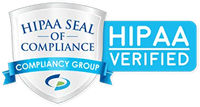Email marketing plays a vital role in healthcare by fostering strong connections between providers and patients. It helps share important updates, promote services, and improve overall engagement. To maximize impact, it’s essential to track key performance metrics such as open rates, click-through rates, and conversions. These insights guide more effective campaigns, ensuring clear, timely communication that supports patient satisfaction and care quality.
Open Rate
The open rate shows how many recipients open your email. It’s a key indicator of your email’s effectiveness. A high open rate means your subject line grabbed attention. This metric is important because it reflects your engagement levels. By understanding open rates, you can tailor your approach and connect better with patients.
Definition and Significance
Open rate is calculated by dividing the number of opened emails by the total delivered. A good open rate indicates your emails are relevant and timely. It helps you understand what catches your audience’s interest. Monitoring this metric can guide future strategies. It’s essential for assessing your email marketing success.
Strategies to Improve Open Rates
To boost open rates, craft compelling subject lines. Keep them short and personalized to grab attention. Timing is also crucial; send emails when recipients are most likely to check them. Segment your audience to ensure content is relevant. Experiment with different approaches to see what works best. These strategies can lead to more effective communication.
Click-Through Rate (CTR)
Click-through rate (CTR) measures how many people click on links in your email. It shows how engaging and relevant your content is. A high CTR indicates that the message resonates with recipients. This metric is important for gauging the effectiveness of your calls to action. By focusing on CTR, you can improve patient interaction and engagement.
Understanding CTR and Its Impact
CTR is calculated by dividing the number of clicks by the number of opened emails. A strong CTR means your audience finds value in your content. It helps identify which topics or offers spark interest. Tracking this metric allows you to refine your strategies. A better CTR can lead to more appointments and patient interactions.
Techniques for Enhancing Engagement
To boost CTR, make your email content clear and compelling. Use strong and direct calls to action. Ensure your links are easy to find and click. Personalize content to meet the needs of different patient groups. Test different layouts and messages to see what gets the best response. These techniques can lead to more effective and engaging emails.
Conversion Rate
The conversion rate measures how many recipients take a desired action after reading your email. It’s a vital metric for understanding the success of your calls to action. In healthcare, this might mean booking an appointment or signing up for a newsletter. A high conversion rate indicates that your message inspired action. By tracking this, you can gauge the effectiveness of your marketing strategies.
Measuring the Effectiveness of Calls to Action
To measure conversion rates, track the number of people who complete the desired action divided by the total recipients. This tells you how compelling your call to action is. If the rate is low, consider revising your content or offer. Clear, direct, and engaging language can improve results. Consistent monitoring helps refine your approach for better outcomes.
Examples of Healthcare-Specific Conversions
In healthcare, conversions can take many forms. Patients might schedule a check-up or follow a link to health tips. They might sign up for a new program or download a health app. Each conversion step helps strengthen patient engagement and care. By focusing on these actions, healthcare providers can enhance both communication and service quality.
Bounce Rate
Bounce rate measures how many emails didn’t reach recipients. It’s important because it affects your email’s effectiveness. Bounces can be hard or soft. Understanding these differences helps improve your email campaigns. Keeping your bounce rate low ensures that your message reaches more patients. This metric is crucial for maintaining a healthy email list.
Difference Between Hard and Soft Bounces
Hard bounces happen when emails can’t be delivered permanently. This could be due to invalid addresses. Soft bounces are temporary issues, like a full inbox. Knowing the difference helps you address the right problems. Regularly updating your email list can reduce hard bounces. Soft bounces might resolve on their own, but it’s good to monitor them.
Steps to Reduce Bounce Rates
Start by cleaning your email list regularly. Remove or update invalid addresses to reduce hard bounces. For soft bounces, try resending emails later. Ensure your content isn’t flagged as spam by using clear and relevant subject lines. Testing emails before sending can also catch errors. These steps help ensure that your emails reach the right people successfully.
List Growth Rate
List growth rate measures how quickly your email list is expanding. It’s essential for reaching more patients and enhancing engagement. A growing list means more people are interested in your services. This metric helps you understand if your outreach efforts are working. Maintaining a healthy growth rate ensures your messages reach a wider audience.
Importance of Growing Your Subscriber List
A larger subscriber list boosts your communication efforts. It allows you to connect with a broader patient base. This can lead to increased appointments and better patient relationships. Growth also indicates that your content is valuable. Expanding your list should be a continuous effort to keep your audience fresh and engaged.
Methods for Acquiring New Subscribers
You can attract new subscribers by offering valuable content. Provide health tips or updates relevant to your audience. Use sign-up forms on your website and social media. Offer incentives like free guides or discounts for subscribing. Encourage current patients to refer others. These tactics help build a robust and engaged mailing list.
Unsubscribe Rate
The unsubscribe rate shows how many people opt out of your emails. It’s a key metric for understanding your audience’s engagement. A high rate might signal issues with your content or frequency. Keeping track of this helps you adjust your strategy. Lowering unsubscribe rates ensures a more engaged subscriber list.
Analyzing Reasons for Opt-Outs
People unsubscribe for various reasons. Sometimes, emails are too frequent or lack relevance. Content that doesn’t meet their needs can also drive opt-outs. Surveys can help identify specific reasons. Understanding why people leave allows for targeted improvements. This feedback is valuable for refining your approach.
Strategies to Minimize Unsubscribes
Focus on delivering valuable and relevant content. Segment your audience to tailor messages specifically for them. Maintain a consistent, but not overwhelming, email schedule. Encourage feedback to understand what your subscribers enjoy. These strategies help keep your audience engaged and reduce opt-outs.
Email Sharing/Forwarding Rate
The email sharing or forwarding rate tracks how often recipients share your emails. It’s an important metric for gauging content value and reach. When people share your emails, it extends your message beyond your immediate audience. This helps improve engagement and spreads your healthcare message to potential new patients. A higher sharing rate indicates compelling content.
Encouraging Patients to Share Valuable Content
To boost sharing, focus on creating valuable and informative content. Include health tips, news, or updates that patients find useful. Encourage sharing by adding clear calls to action within the email. Make sure sharing buttons are easy to find and use. Personal stories or patient testimonials can also motivate people to share. These strategies help expand your reach.
Benefits of Increased Reach and Engagement
When patients share your emails, your healthcare message reaches more people. This increased reach can lead to greater awareness of your services. More engagement can result in new patient inquiries or appointments. It also enhances your reputation as a trusted healthcare provider. By fostering a community feel, you create a loyal and informed patient base.
Revenue Generated
Revenue generated from email campaigns is a crucial metric. It shows how your emails contribute to financial success. By linking specific campaigns to revenue, you can see what works best. Understanding this connection helps refine your strategy. It ensures that your efforts lead to tangible results and growth.
Linking Email Campaigns to Revenue Outcomes
Connecting email activities to revenue involves tracking patient actions. For example, measure how many readers schedule appointments or purchase services. Use tracking tools to follow these actions from email to outcome. This process highlights which emails drive results. It provides clear insights into your campaign effectiveness.
Tracking ROI in Healthcare Marketing
Return on investment (ROI) measures the financial return from your marketing efforts. Calculate ROI by comparing revenue generated to the cost of your campaigns. A positive ROI shows that your email strategies are effective. Regularly analyzing ROI lets you optimize future emails for better returns. This focus ensures sustainable growth and smarter spending.
Engagement Over Time
Tracking engagement over time is crucial. It helps you see how interest in your emails changes. By watching trends, you can understand what grabs attention. Consistent engagement means your content hits the mark. If you notice dips, it might be time to reassess your approach.
Monitoring Trends and Patterns in Engagement
Look for patterns in how your audience interacts with emails. Maybe certain topics or times of day get more clicks. Use analytics tools to track these behaviors. This data can reveal what works best for your audience. Recognizing these trends helps you fine-tune your messaging and timing.
Adjusting Strategies Based on Data
Use the insights from engagement patterns to adjust your strategies. If a particular email does well, figure out why and repeat its success. If engagement drops, try new content or formats. Constantly refining your strategies ensures relevance and interest. This approach keeps your audience engaged and your emails effective.
Device and Platform Metrics
Understanding which devices your audience uses is crucial. Many people check emails on their phones. Knowing this helps you design emails that look great everywhere. Device metrics show you how emails perform on phones, tablets, and computers. This information helps tailor content to fit each screen.
Importance of Mobile Optimization
Mobile optimization is key in today’s world. Emails should load quickly and be easy to read on small screens. If an email doesn’t display well on a phone, it might get ignored. Using responsive designs ensures your message reaches everyone effectively. Mobile-friendly emails can boost engagement and response rates.
Analyzing Performance Across Different Devices
Reviewing performance across devices helps refine your strategy. Look at which devices drive the most engagement and clicks. This data can guide design and content choices. If certain devices perform better, focus efforts there. By understanding these metrics, you can improve the overall effectiveness of your email campaigns.
Spam Complaint Rate
Spam complaint rate is an important metric to monitor. It shows how often recipients mark your emails as spam. High rates can harm your email reputation. Understanding why complaints happen helps you make improvements. Keeping this rate low ensures your messages reach the intended audience.
Understanding Causes of Spam Complaints
Spam complaints can arise for several reasons. Emails might be too frequent or not relevant to the recipients. Using misleading subject lines can also trigger complaints. Sometimes, people forget they subscribed. Identifying these causes allows you to address issues directly. This understanding is key to reducing complaints.
Best Practices to Avoid Being Marked as Spam
There are simple ways to avoid spam labels. Always use clear and honest subject lines. Ensure your content is relevant and valuable to your subscribers. Give recipients an easy way to unsubscribe if needed. Regularly update your email list to remove inactive addresses. Following these best practices helps maintain a healthy email reputation.
Campaign Performance by Segment
Evaluating your email campaigns by segment can enhance their effectiveness. Different patient groups may engage differently with your messages. By analyzing these metrics, you can see what resonates best with each demographic. Understanding segment performance helps tailor your strategies. This ensures better engagement and more personalized communication.
Evaluating Metrics Based on Patient Demographics
Looking at demographics like age, location, or health interests provides valuable insights. For instance, younger patients might prefer digital communication over traditional methods. Analyzing these preferences lets you adapt content accordingly. With this data, you can create messages that speak directly to each group’s needs. This targeted approach boosts overall campaign success.
Benefits of Targeted Messaging
Targeted messaging offers many benefits. It increases the relevance of your content and improves patient engagement. When patients feel messages are personalized, they are more likely to respond positively. This leads to higher open and click-through rates. By addressing specific needs, you strengthen patient relationships and foster trust.
Benchmarking and Industry Comparisons
Benchmarking your email metrics against industry standards is essential. It helps you understand where your campaigns stand. Comparing these metrics shows if your results align with similar healthcare organizations. This insight helps identify areas for improvement. Knowing industry averages provides a clear picture of your performance.
Looking at industry standards offers valuable context. You can see what’s typical for open rates, click-through rates, and more. If your metrics fall short, it highlights opportunities for growth. Conversely, if they align or exceed, it confirms effective strategies. This information guides decision-making and future planning.
Using benchmarks to set goals ensures they are achievable. Realistic targets keep your team focused and motivated. Aligning goals with industry standards helps improve overall performance. These targets drive continuous improvement and innovation. By understanding benchmarks, you can create a roadmap for success in email marketing.
Final Thoughts
In healthcare email marketing, focusing on the right metrics is key. Open rates show how well your subject lines work. Click-through rates measure engagement with your content. Conversion rates track how many take desired actions, like booking an appointment. These metrics provide a clear view of your campaign’s success.
Using data effectively helps improve your strategies. Regularly reviewing metrics allows you to fine-tune your approach. Comparing your performance to industry benchmarks offers valuable insights. This ongoing analysis ensures your emails remain effective and relevant. It fosters better communication and patient engagement.
Continuously leveraging data leads to growth. By understanding and applying these metrics, you enhance your marketing efforts. This proactive approach not only improves your campaigns but also builds stronger relationships with patients. Embrace these insights for ongoing success and improved healthcare outcomes.






